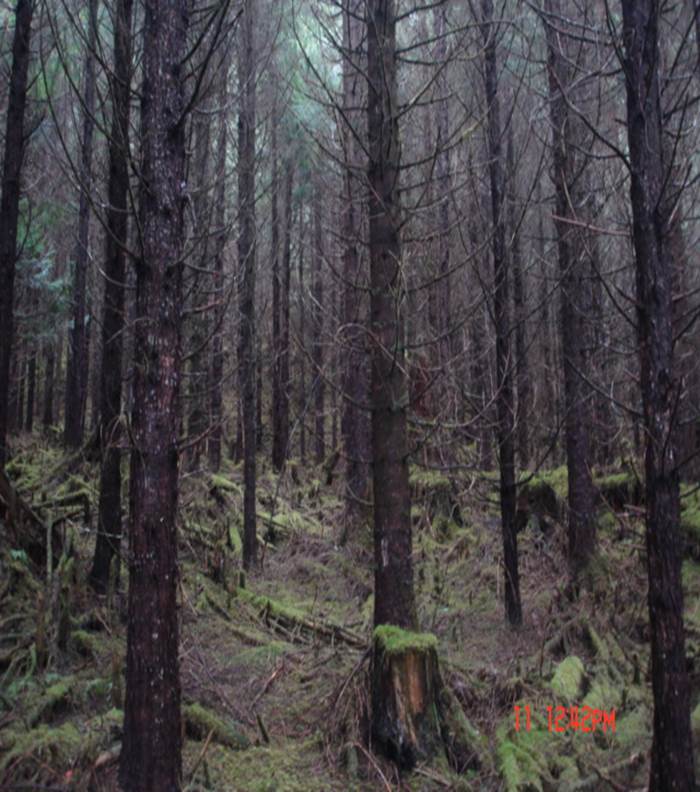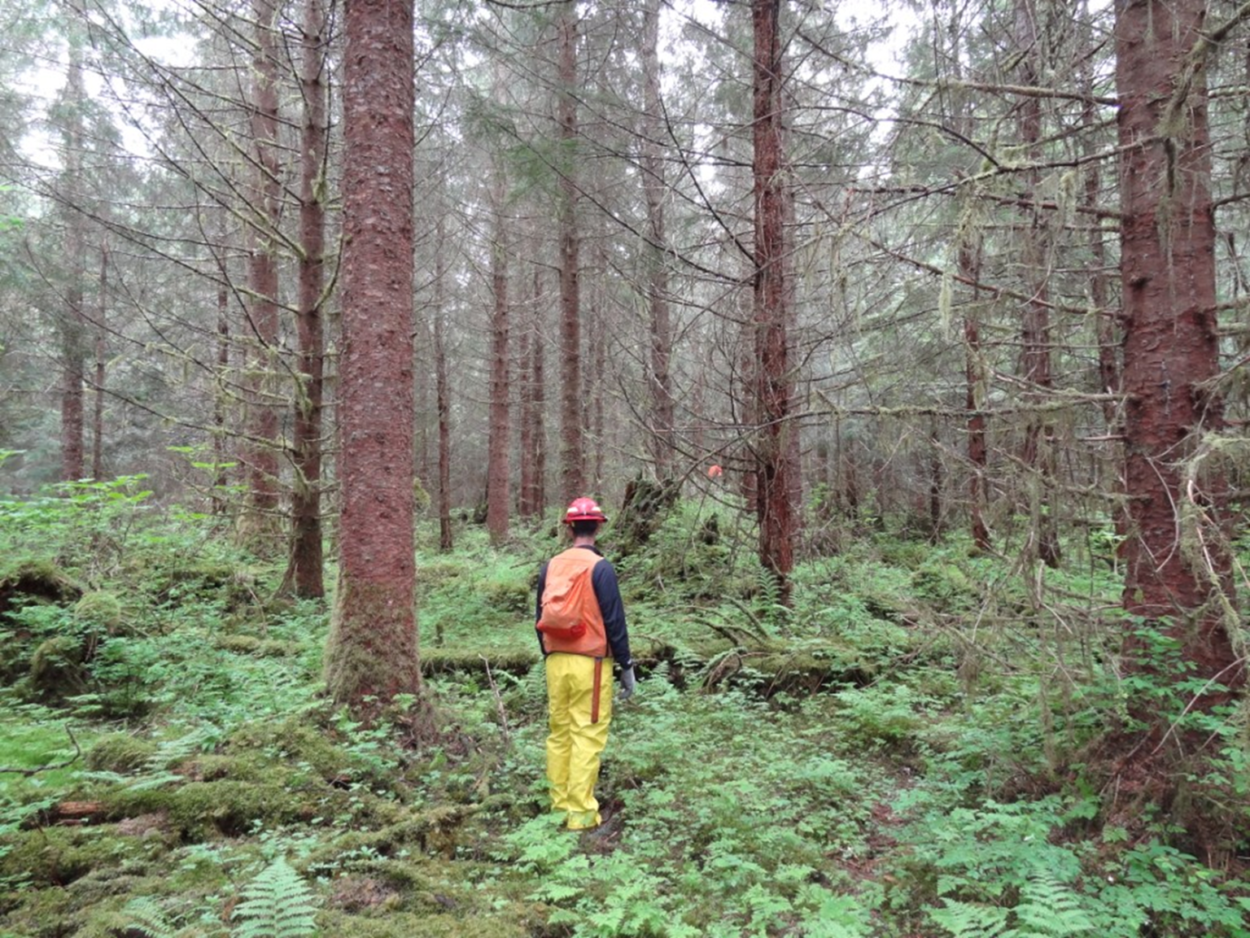
The U.S. Forest Service is proposing a project to help restore some young-growth forests in central Southeast. It’s seeking funding and approval to treat areas that have been logged in the Petersburg and Wrangell Ranger Districts. If funded, field work could start next year. KFSK’s Angela Denning reports:
If you live in Southeast Alaska you’ve likely seen young-growth forests. They crop up after clear cut logging. The trees are all the same age–pole-like—with minimal low branches.
“Trees come in really thickly and they can fully occupy a site,” said Sheila Spores is a silviculturist with the U.S. Forest Service. “Often times there’s nothing in the understory. You know, it will be sparse and dark, no shrubs, no forbs, and no other little trees.”
Besides logging, young-growth forests can occur naturally if there is a disturbance like a major blow down. Eventually, the forests evolve into old growth with a healthy ecosystem that is better for wildlife. But it takes a very, very long time. Like…
“A few hundred years,” Spores said.
The U.S. Forest Service is proposing to help speed that process up by manually thinning stands on about 110,000 acres.
The process also allows them to encourage the growth of certain species of trees.
“You know, yellow cedar is a slow growing species that is being impacted by yellow cedar decline,” Spores said. “So, we can go in and if we have two trees that are really good, solid trees but you have to pick one, we’ll pick the yellow cedar over the other one, for example.”
For the most part, the cut trees would be left on the forest floor to create a natural understory.
Spores says they hope to get funding to continue the work for a decade. The cost will depend on how much is approved and for how long. Most money will come through a restoration trust fund, which gets funding from tariffs on imported timber and other wood products.
The forest service started this type of young-growth restoration in the 1970s.

Encouraging old growth is not only better for wildlife habitat and water sheds but also for future logging. The thinning is actually referred to by the forest service as “pre-commercial thinning” because eventually it could be logged again.
And that’s a sticking point for some conservation groups, especially when some of the young-growth is in road less areas where development has been prohibited in the past. Alaska currently has a Roadless exemption from the Trump administration but the Biden administration has said it would seek to reinstate it.
“Our main concern at SEACC is inclusion of the inventoried road less areas,” said Meredith Trainor, Executive Director of the Southeast Alaska Conservation Council (SEACC).
She says SEACC will be keeping an eye on how the project develops.
“In general, I think this is a good thing that they’re doing this thinning work and they’re doing sort of what is effectively restoration work in areas that have been previously logged,” said Spores. “We’d just like to see the roadless areas treated separately since they have different management requirements and are a different category of forest.”
It’s not certain who will do the work, which usually includes people walking through the forest with chainsaws. Spores says they sometimes partner with conservation groups or tribes. But mostly, they contract out to companies that specialize in it.
“I have to say that this work is really extremely physical and it’s hard and we don’t often have large, local workforce that want to do this kind of work,” Spores said.
The Forest Service is taking input this November and they hope to make a decision by the end of the year. If funded, the field work could start next spring or summer.









